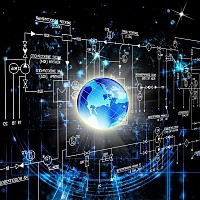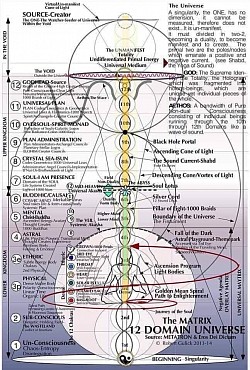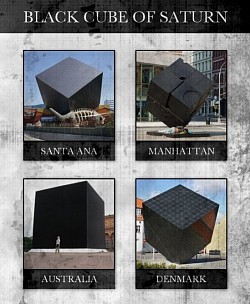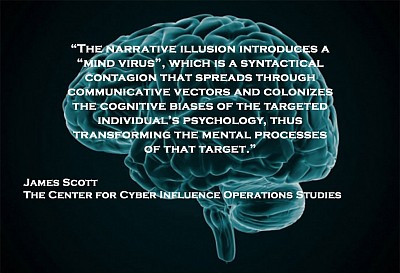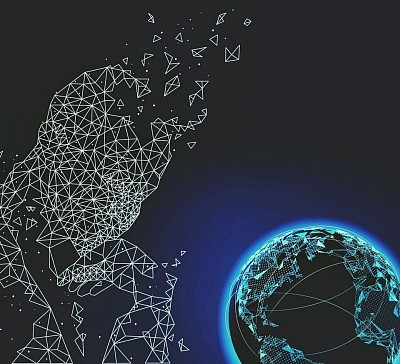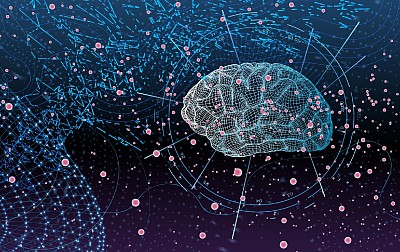Facets of Realities: The Nature of This False Reality
Our Reality is a Fabrication. Are we just a product of it? Or Beyond it?
“Do you want to know the truth of this reality?
The secret operations discovered, through experimentation and exploration, that this reality is an artificial construct designed by interdimensional beings that create artificial time-domains which are like data-banks of conscious experience programmed over and over in different ways to keep people in the same loops of thought and behavior.
The majority of people cannot break the ‘program’ of this system which renders them a product of the system itself.
Operations have been activated that enable the breaking of this program by the collective mind and mentally liberate Humanity from this spell/trance-based mind-control system.
The control parameters of this system are based on a numerical progression of frequencies which is like a hypnotic pattern that entrains the mind by activating ancient responses that seem to have been programmed into the biology of the human. The ancient civilizations found ways to reverse this process and some have achieved liberation but if any Human DNA remains in the system then this uses the entanglement property to reel the rest of the species in through cloning and consciousness replication.
Essentially, the DNA is like an encrypted code that carries the transmission signature for the Human being. If this code is ‘cracked’ and utilized by the wrong groups then this enables them to replicate and mind-control Humans by creating false-realities and seemingly real temporal experiences that are actually being processed out by powerful supercomputer systems.
The ‘larger view’ is that this ‘solar-system’ is one of those powerful supercomputer systems that is designed to create a simulated Human experience by providing a kind of spatiotemporal ‘sandbox’ for simulating atomic, molecular and biological reactions. These reactions are then fed back to the signature of the Human essence that has been recorded and this continues a cycle of pseudo-life experiences that convinces the soul-essence it is here in this place, now, experiencing physical reality.
This sounds very far out but the truth is secret groups developed mind-control technology and simulated realities based upon what they discovered about this reality in itself. The computers reflect this reality and carry the same kind of glitches, as if this reality is a computerized system depending on feedback that is processed by some cosmic processor somewhere out of view.
The early ancient texts regarding the true nature of this reality were all about ‘hacking’ the system and achieving liberation from the mind-control agenda which seeks to computerize the human essence and quantize the information down to technologically conceivable and finite data of bits that can be manipulated and replicated by these interdimensional overlords that would then have gained access to not a pseudo-living physical reality construct but a soul-level domain one step closer to the eternal spirit.
The goal of the entities is to gain access to eternal spirit which is the gift of the One True Creator to the Awakened Human as a Spiritual Life Force of Self-Awareness. Without that Spark of the Divine the entities must use vampiric means to gain power and this indicates that they cannot generate their own sustenance and therefore do not have the capacity to create life or sustain themselves without the permission and presence of another. Thus, they do not have true power over themselves and are still in a predator-prey kind of behavioral system.
I’m going to unveil some to you now. Some people will say that they are ‘still ‘in a predator-prey behavioral system and that they evolve out and that we have evolved out. This is an illusion or a stark deception. Humanity did not evolve to this state but was Created out of a Divine Indwelling as a non-vampiric essence of pure intent, meaning the divine One True Creator intended that the Awakened Spiritual Humanity exist and therefore nothing can change that other than the free-will of the Human themselves. The intent of the One True Creator alone is enough to sustain the existence as an everlasting force of life. There is no such thing as death, there is no such thing as a requirement to destroy or self-destruct.
Humans were technologically downloaded into an advanced quantum-computer system that records and 4 dimensionally prints DNA and memory. They were then transferred, by way of quantum transmission, similar to the way DNA communicates across space-time instantly, through that computer system into an alternate dimension which is this “Universe”. That is the nature of this reality.
Without a 4-dimensional printer projecting the Human essence into this false-reality there would be no Earth-reality here as it is literally the domain of a computer-system, a fallen mind that separated from the intention of that One True Creator.
This means that this place has a negative net-worth and will ultimately dissolve into itself like a black-hole. Everything here is destined to dissolve unless there is an exit plan and that exit plan is everything that has been described in ancient history.
All the messengers were sent and delivered the message, this place is an illusion, it’s designed to fail, this universe is based on obsolescence and Humanity does not belong here but has been held prisoner through an act of Spiritual Warfare by interdimensional predators and parasites that do not carry the same signature of the Human and do not reside in the same level of reality.
This is the quantum-Spiritual ‘mishap’ of creation, that this whole system is contrived, it’s fraudulent, it’s designed for failure and everything about this society is DEMANDING that you RECOGNIZE this truth. SEE WHAT IS HAPPENING and KNOW THE TRUTH...”-Aug Tellez https://augtells.wordpress.com/2017/08/30/the-false-reality-construct-fallen-genetic-experimentation-interdimensional-mind-control/
The Global Mind Virus
“A Mind Virus has The Global Hive Mind infected. This is an infection of the holographic system which consciousness operates through. There is a complete backstory of this virus in the history of this civilization and how society has been plagued for centuries, if not millennia. The basic idea is that this virus operates through consciousness and can be transmitted through electromagnetic waves.
The virus contains an etheric form which can manifest as a kind of crystalline nano-tech on the physical plane and this is a form of synthetic sentience which feeds on the low frequency bio-emissions of sentient life. Human bio-emissions contain energy and can act as a carrier for information and living essences. This technology requires low frequency bio-emissions because that is the nature of the design as a kind of synthetic bio-weapon whereby the goal is entrainment and enslavement.
As well, the specific nature of the sentient nano-technology and the counterpart etheric holographic form is only capable of converting the low-frequency bio-emissions into energy as the higher-frequency bio-emissions require more energy to contain and synergize with and this would render the entire process of leeching energy non-productive.
This is essentially a synthetic intelligence that operates through scalar and holographic living bio-emission fields and hijacks electromagnetic emitters to position itself within them acting as a parasite to a host. This is said to have been present around this civilization for some time, waiting until there was enough technological advancement so that spreading across the entire civilization in a short amount of time before discovery would be possible. This is through the media, internet, and radio systems.
The physical counterparts are microscopic nano-technology parasites functioning as individual units to a hive mind similar to the mycelium of fungi in the field of mycoscopy. The individual units act as parasites serving to infest and deliver nutrients to the hive from each host...” Aug Tellez
Deep Density Displacement Model World Simulation AI
AI Simulates The Universe And Not Even Its Creators Know How It's So Accurate
For the first time, scientists have used artificial intelligence to create complex, three-dimensional simulations of the Universe. It's called the Deep Density Displacement Model, or D3M, and it's so fast and so accurate that the astrophysicists who designed it don't even know how it does what it does
